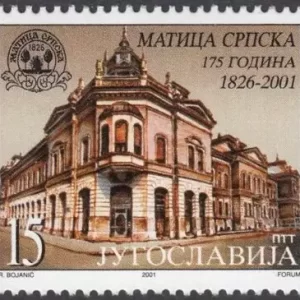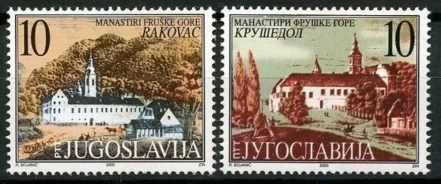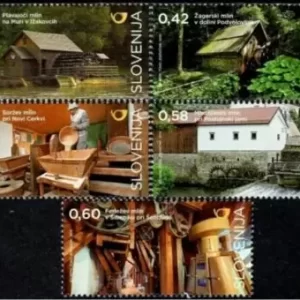Serbia year 2017 stamps Architecture – Cities of Serbia complete set MNH**
“Architecture – Cities of Serbia” stamps issued by Serbia in 2017 is a commemorative issue showcasing prominent urban landmarks.
Based on philatelic sources, the complete set generally refers to the issue released on October 9, 2017, and it consists of two different stamps and an accompanying souvenir sheet or block.
Key Details of the Set
| Stamp Details | 1st Stamp (Higher Denomination) | 2nd Stamp (Lower Denomination) |
| Theme | Cities of Serbia | Cities of Serbia |
| City/Motive | Kraljevo – Monument to the Serbian Warriors (Spomenik srpskim ratnicima) | Novi Pazar – Panorama with the Old Bazaar (Stara Čaršija) |
| Denomination | 46.00 Dinars (Dinarska pošta) | 23.00 Dinars (Dinarska pošta) |
| Format | Issued as a regular commemorative stamp. | Issued as a regular commemorative stamp. |
| Issue Date | October 9, 2017 | October 9, 2017 |
Serbia is home to a diverse array of architectural styles and influences, reflecting its rich history and cultural heritage. Here are some notable cities in Serbia and their architectural highlights:
- Belgrade: As the capital and largest city of Serbia, Belgrade boasts a mix of architectural styles from different periods. The Old Town (Stari Grad) area features well-preserved Ottoman-era buildings, such as the Belgrade Fortress (Kalemegdan) and the Bajrakli Mosque. In contrast, the city center showcases grandiose 19th-century buildings influenced by Austro-Hungarian architecture, including the Serbian Parliament Building and the Old Palace. Modernist and contemporary architecture can also be found throughout Belgrade, with notable examples like the Western City Gate (Genex Tower) and the Museum of Contemporary Art.
- Novi Sad: Known as the “Athens of Serbia,” Novi Sad is famous for its cultural and architectural heritage. The Petrovaradin Fortress, overlooking the Danube River, is one of the city’s most iconic landmarks, featuring Baroque-style fortifications and underground tunnels. The city center is characterized by elegant Austro-Hungarian buildings, including the City Hall and the Serbian National Theatre. Novi Sad’s historic neighborhoods, such as Stari Grad and Dunavska Street, showcase charming streetscapes and traditional Serbian architecture.
- Niš: Niš is one of the oldest cities in Europe and boasts a rich architectural heritage. The city’s most famous landmark is the Niš Fortress, a sprawling complex dating back to Roman times and later expanded by the Ottomans. Within the fortress, visitors can explore ancient ruins, Ottoman mosques, and a Turkish bath. Niš also features well-preserved Ottoman-era neighborhoods, such as Kazandžijsko sokatče (Tinkers’ Alley), with its narrow cobblestone streets and traditional houses.
- Subotica: Located near the border with Hungary, Subotica is renowned for its Art Nouveau architecture. The city center is dotted with stunning examples of this decorative style, including the City Hall, the Raichle Palace, and the Subotica Synagogue, which is one of the largest synagogues in Europe. Subotica’s Art Nouveau buildings feature intricate facades, decorative motifs, and colorful ceramic tiles, making it a must-visit destination for architecture enthusiasts.
- Kragujevac: Kragujevac is known for its mix of architectural styles, ranging from medieval fortifications to modernist structures. The city’s most prominent landmark is the Šumarice Memorial Park, dedicated to the victims of World War II. Kragujevac also features elegant 19th-century buildings, such as the First High School and the Old Foundry, as well as socialist-era monuments and residential complexes.











Reviews
There are no reviews yet.